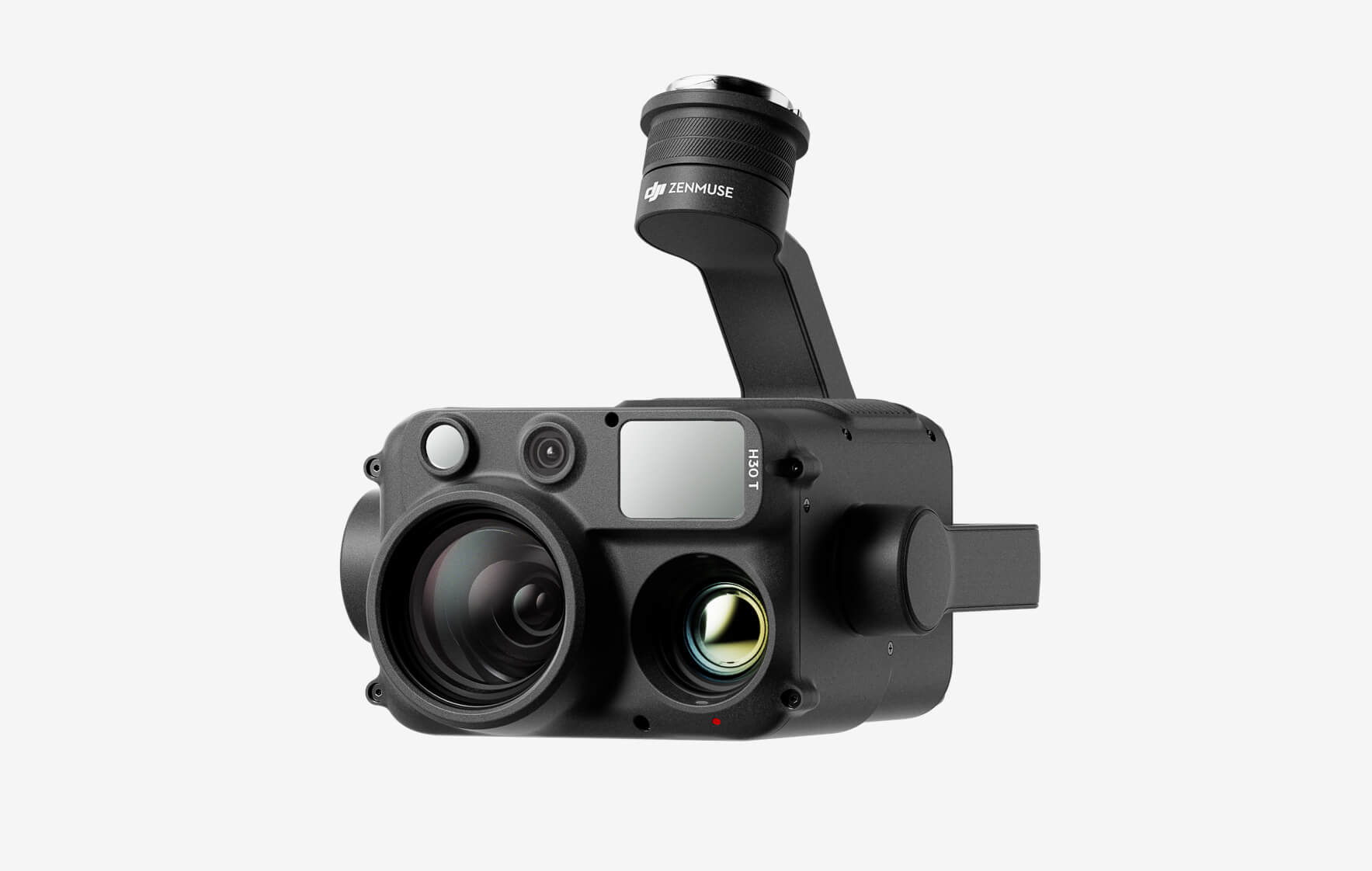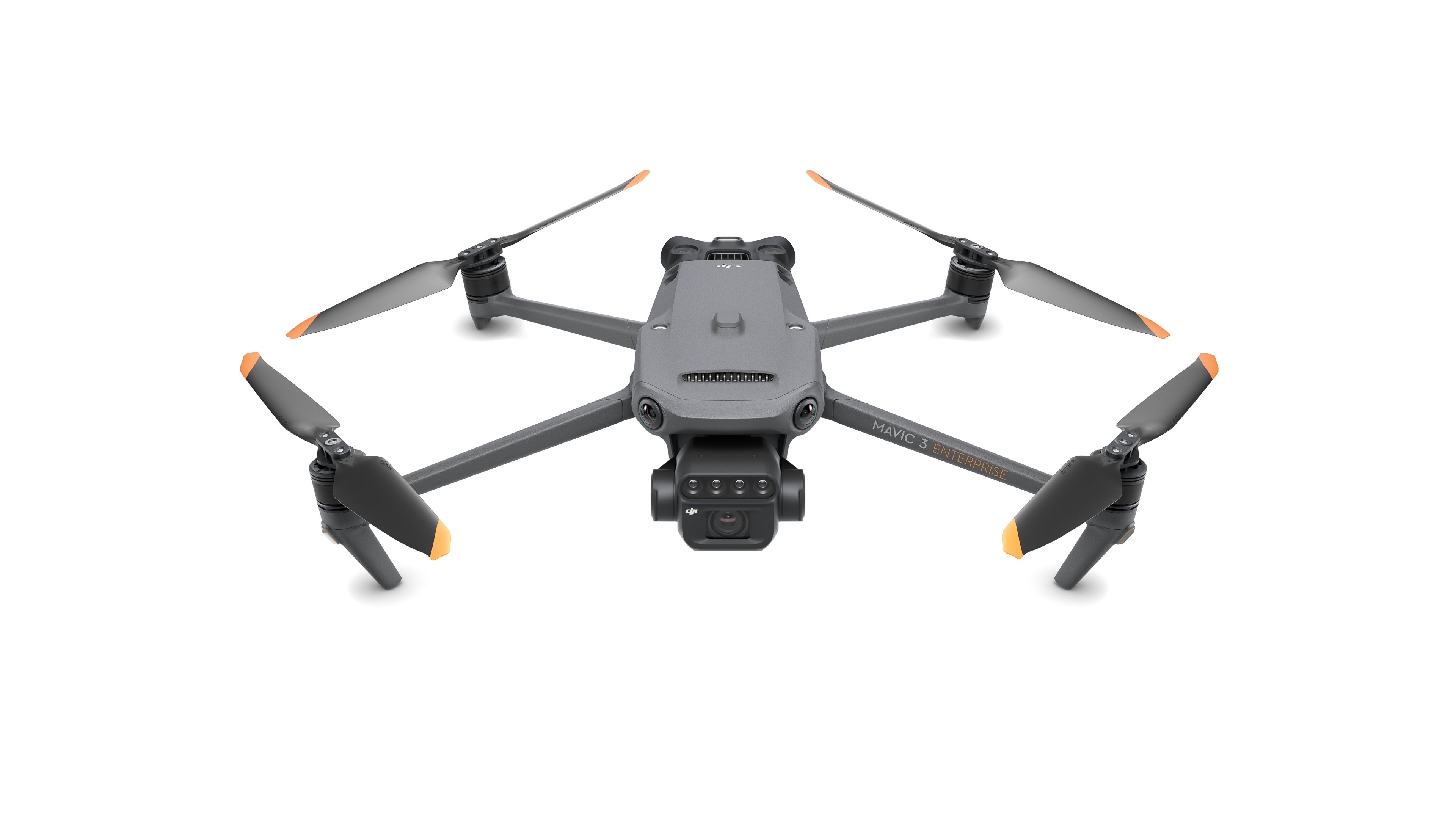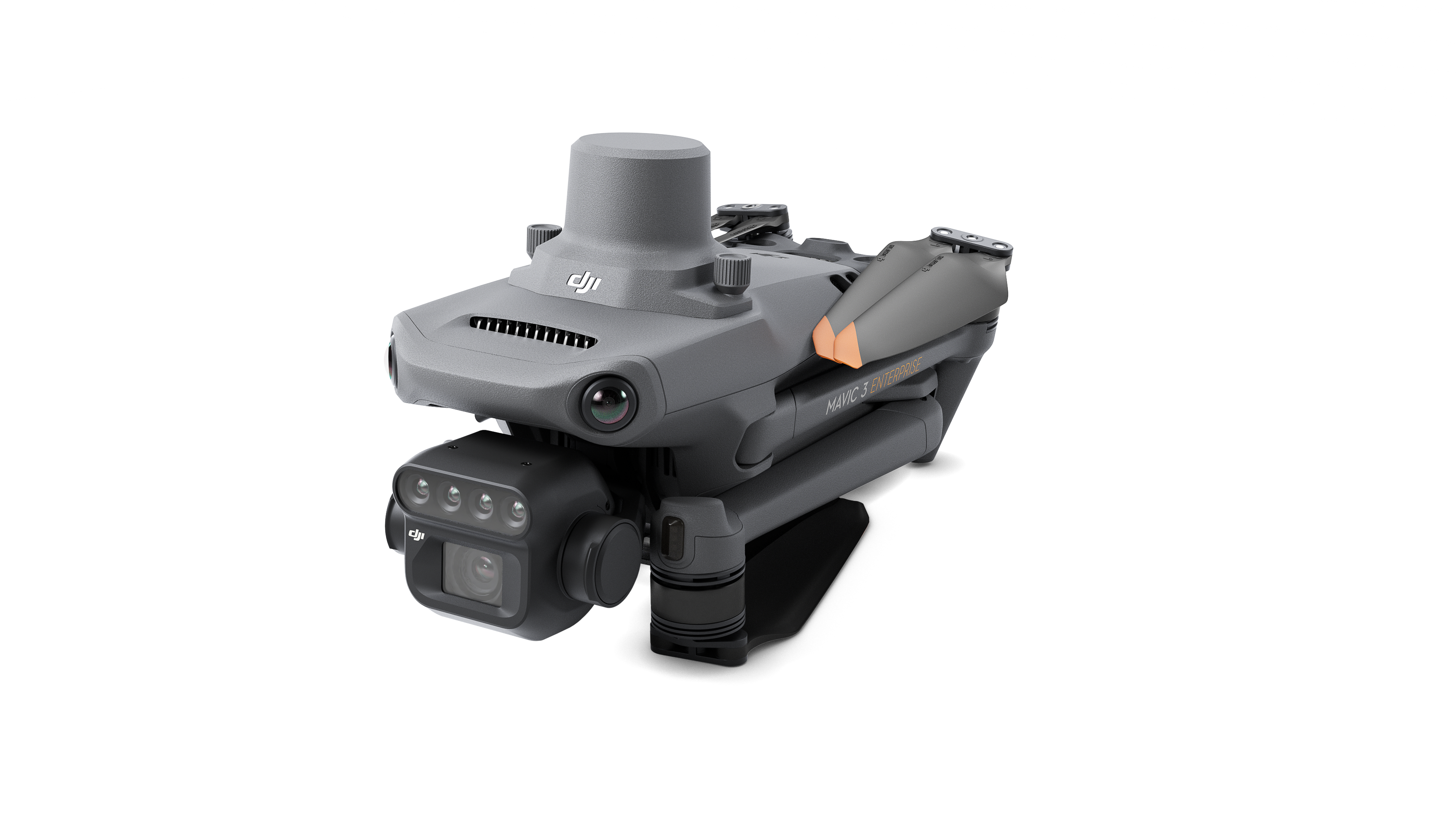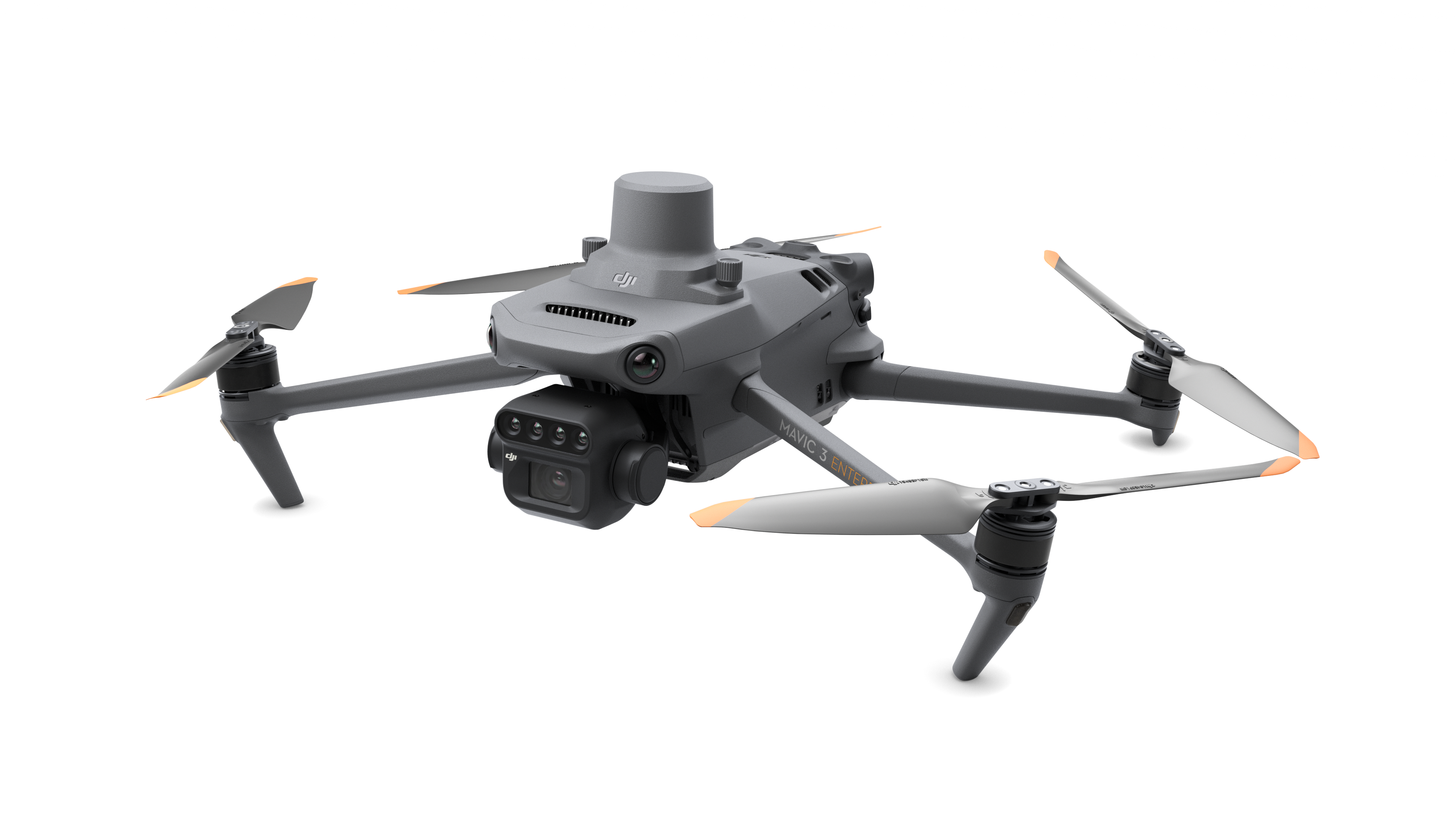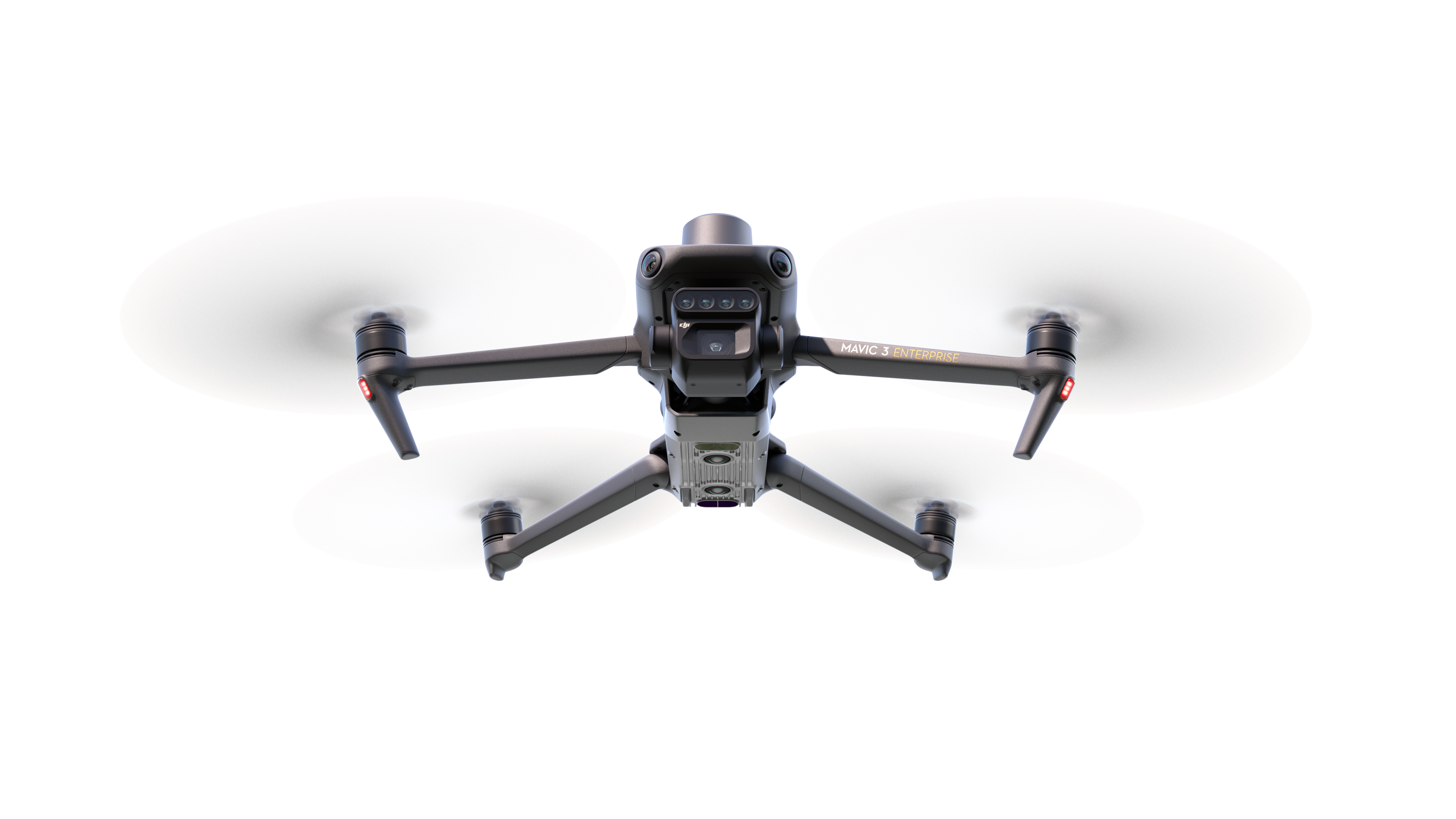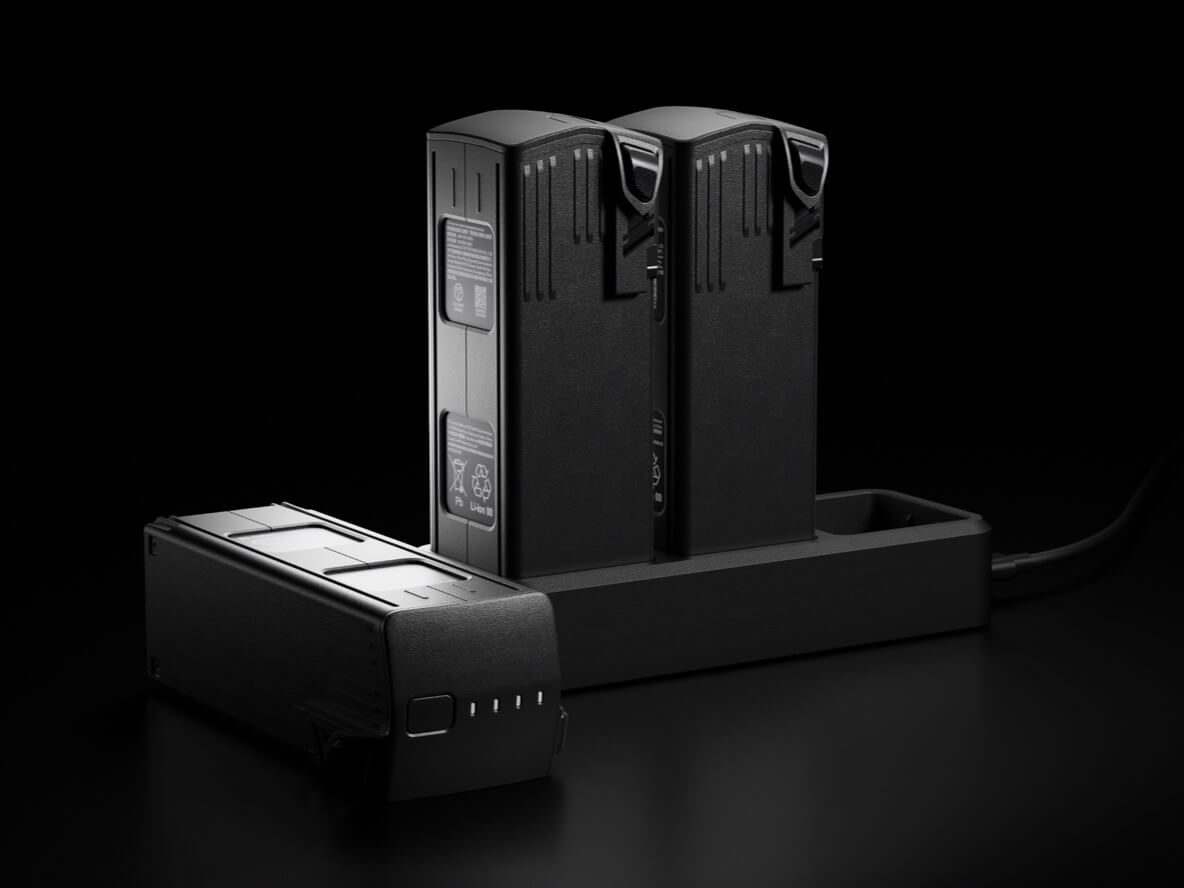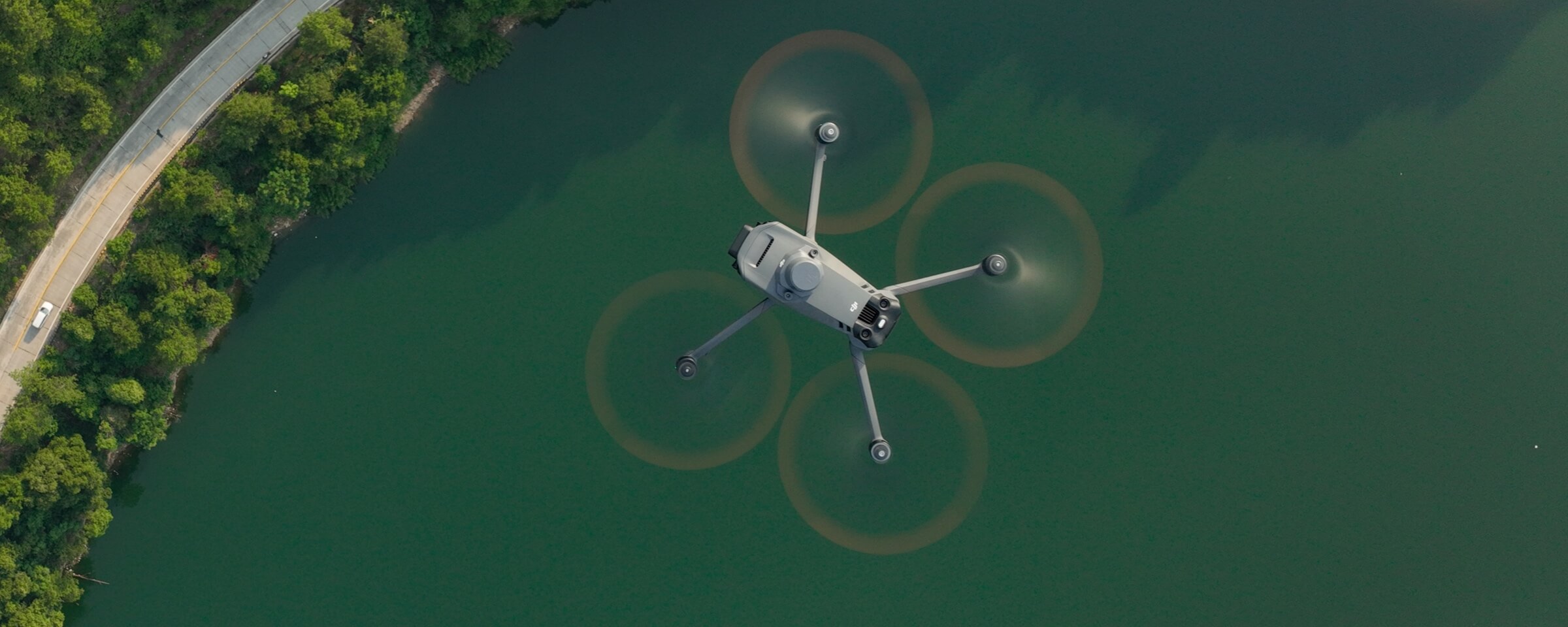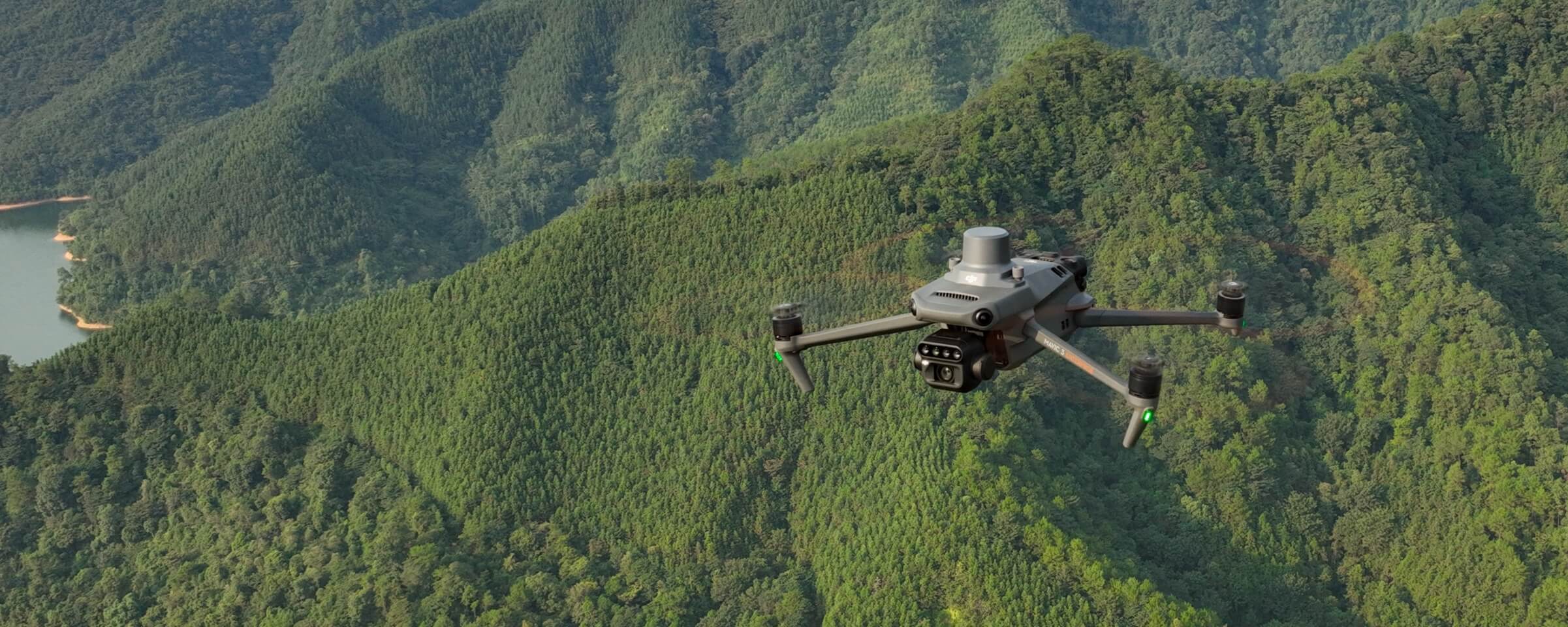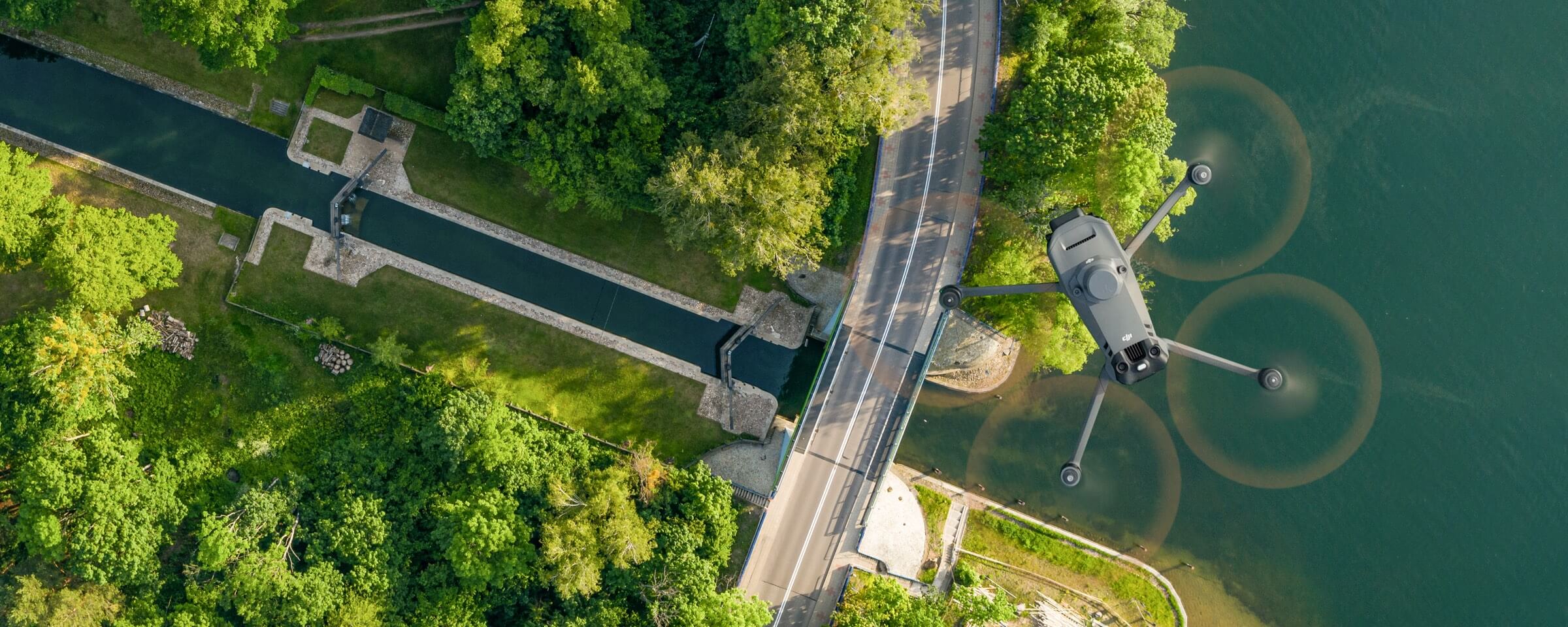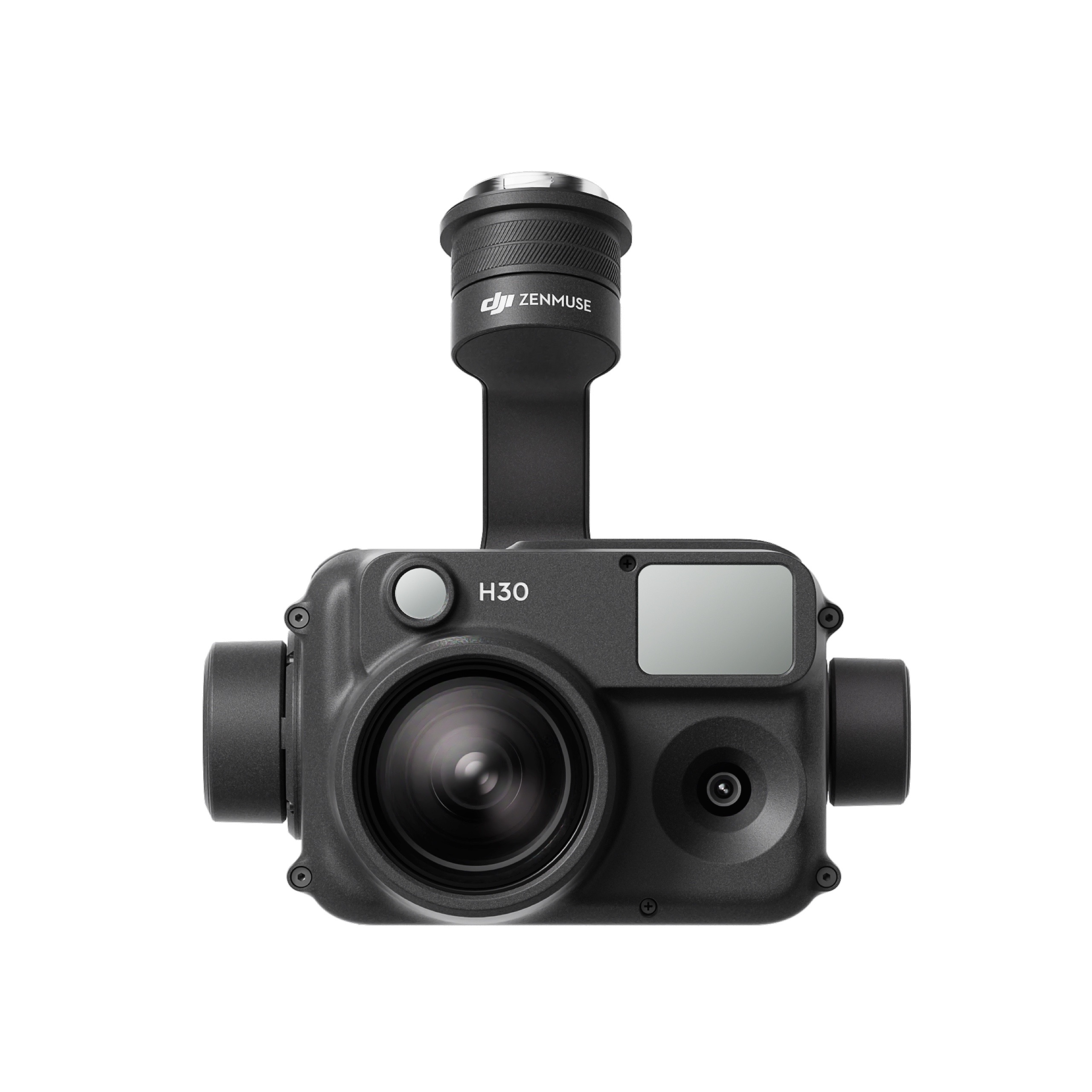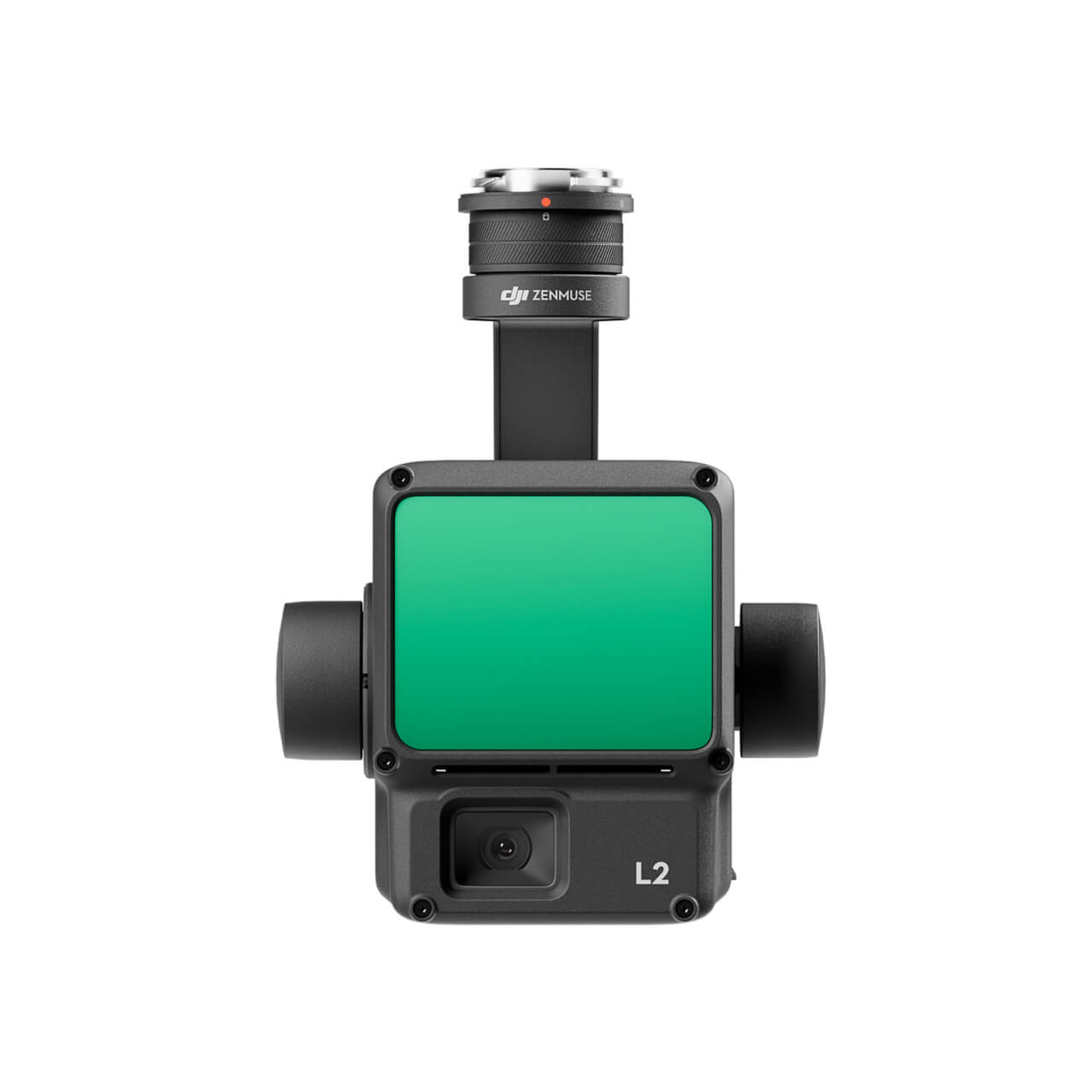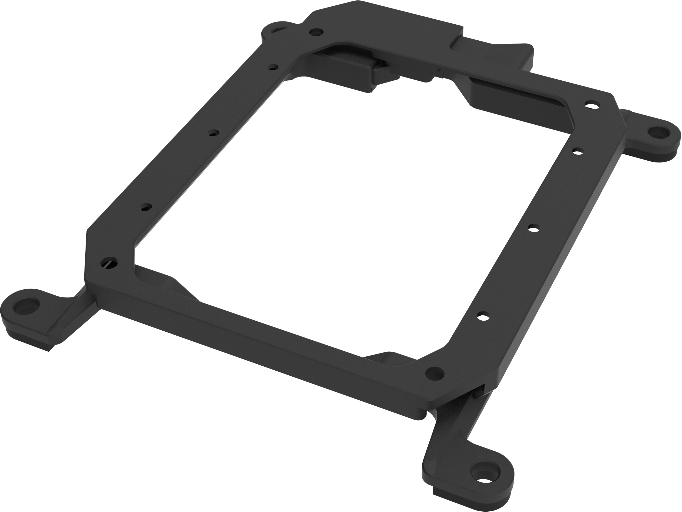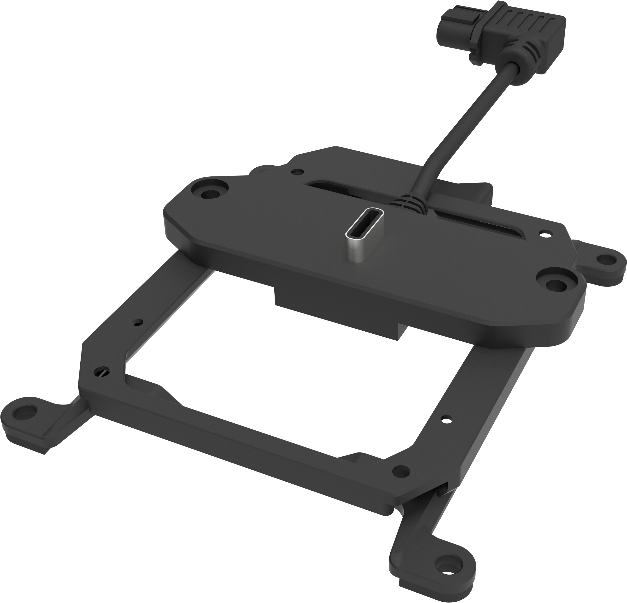Aircraft
What countries/regions is DJI Mavic 3M available for purchase and use?
DJI Mavic 3M is available in Mainland China, North America, and other select regions. For more specific information regarding use and availability, check the official DJI website
What should I be aware of when using the DJI Mavic 3M’s sunlight sensor?
You should avoid blocking the sunlight sensor when it is in use. For example, the vegetation indices, such as NDVI, cannot be obtained when it is blocked. In addition, you should avoid rubbing the sensor, since its performance will be affected if the surface is scratched.
Is DJI Mavic 3M waterproof?
No.
How does DJI Mavic 3M use network RTK services without a 4G network card (including a SIM card)?
You can connect to the network RTK by using Wi-Fi on the remote controller.
Is the DJI Mavic 3M network RTK service bound to the remote controller or the aircraft?
It is bound to the remote controller.
Gimbal Cameras
How many cameras does DJI Mavic 3M have? What are the wavelengths for the multispectral cameras?
DJI Mavic 3M features four 5.5MP single-band cameras and one 20MP RGB camera. The single-band cameras are as follows: green (G) 550 nm ± 16 nm, red (R): 650 nm ± 16 nm, Red edge (RE): 730 nm ± 16 nm, and Near-infrared (NIR): 860 nm ± 26 nm.
What is the focal length of each camera of the DJI Mavic 3M Multispectral Camera?
Multispectral focal length: 4.34 mm (focal length); 25 mm (35mm equivalent focal range)
Visible focal length: 12.29 mm (focal length); 24 mm (35mm equivalent focal range)
Is the image taken by DJI Mavic 3M a DN value or a reflectance value?
DN value.
Does DJI Mavic 3M support image position compensation?
Each of the five camera sensor centers has been compensated in the photo EXIF coordinates according to its position relative to the on-board D-RTK antenna phase center. When the images are mapped, the DJI Terra or DJI SmartFarm Platform automatically uses this parameter for position compensation to ensure the accuracy of the map position.
Does the DJI Mavic 3M camera have distortion correction?
Distortions in visible and multispectral cameras are individually corrected before they are shipped.
Does the DJI Mavic 3M camera correct vignetting?
The original photo generated does not come with vignetting correction, but the parameters used for vignetting correction are included with each photograph.
Are the locations of photos taken by DJI Mavic 3M time synced?
All five cameras are time synchronized.
Where are the photos taken by the DJI Mavic 3M camera saved?
The storage paths are as follows. For normal photography: SD card-DCIM-DJI_2022********_***
For flight path operation: SD card-DCIM-DJI_2022********_***_task name
What are the recommended settings for the DJI Mavic 3M camera?
Users who are beginners are recommended to set the exposure mode of the multispectral and visible light camera to Auto and unlock the AE. The multispectral light metering mode of the system is set to global light measurement by default. The focus mode of the visible camera will be First Waypoint Focus.
What does the DJI Mavic 3M Multispectral camera do?
It detects the reflective strength of the object being photographed over different bands and is widely used in agriculture and forestry for crop health, vegetation coverage, water environment pollution monitoring, and more.
Remote Control & Transmission
How far can DJI Mavic 3M transmit images?
- FCC: 15 km
- CE: 8 km
- SRRC: 8 km
- MIC: 8 km
* The above data was measured by the aircraft in an unobstructed, interference-free outdoor environment. It shows the farthest communication distance for one-way, non-RTH flights under each standard. During flight, pay attention to RTH reminders in the DJI Pilot 2 App.
How much memory does the DJI RC Pro Enterprise Edition have?
The ROM of the remote control is 64GB. For extended storage capacity, microSD card use is also supported.
Does DJI Mavic 3M support MSDK?
Yes.
Does the DJI Cellular module come with a free SIM card?
No. According to real-name requirements, SIM cards must be purchased and activated with the user’s real name.
Does the DJI Cellular module support 5G networks?
No.
What types of SIM cards are recommended?
Nano SIM cards are supported. eSIM SIM cards are not supported.
Is the DJI RC Pro Enterprise Edition compatible with the DJI Phantom 4 RTK, DJI Phantom 4 Multispectral, and the T-Series agricultural drone remote controller?
No.
Does the DJI Mavic 3 Series and DJI Mavic 3 Enterprise Series’ remote controller work with the DJI Mavic 3M aircraft?
The DJI Mavic 3 Series remote controller does not work with Mavic 3M, but the DJI Mavic 3 Enterprise-Series remote controller does.
Battery & Charger
What are the specifications for DJI Mavic 3M’s battery?
5,000 mAh, 15.4 V, 77 Wh.
How long does it take to charge the DJI Mavic 3M’s Intelligent Flight Battery?
When used with a DJI 100W USB-C Power Adapter, it takes about 1 hour and 10 minutes to fully charge an Intelligent Flight battery with the DJI Mavic 3M Charging Hub (100 W).
When connecting directly to the aircraft via the DJI 100W USB-C Power Adapter, it takes about 1 hour and 20 minutes to fully charge an Intelligent Flight battery.
How long does a DJI Mavic 3M’s battery last?
43 minutes.
* This data was measured using DJI Mavic 3M in windless conditions at sea level at a constant speed of 36 kph until the battery reached 0%. Use for reference only. Please pay attention to RTH prompts in the DJI Pilot 2 app when flying.
Does the DJI Mavic 3M charger, battery, and charging hub support fast charging protocols (PD/QC/PPS)?
Yes.
Are the batteries for DJI Mavic 3M compatible with DJI Mavic 3 Series and DJI Mavic 3 Enterprise Series aircraft?
Yes.
Which interface of the DJI 100W USB-C Power Adapter does the DJI Mavic 3M’s 100W battery charging hub need to connect to?
It is recommended to connect to the C1 port.
Aerial Surveying and Application
Does DJI Mavic 3M support KML and KMZ file imports and what are the import path requirements?
The DJI Pilot 2 App supports importing polygon boundaries and waypoint missions for pre-planned aerial photography with KML/KMZ files. Import path: Route > KMZ Import > Select Table of Contents > Internal Storage/SD Card > Locate the KML/KMZ file.
Does DJI Mavic 3M support DSM file imports and what are the import path requirements?
The DJI Pilot 2 App supports importing DSM data for terrain follow during aerial surveying. DSM files are imported as follows: Flight Path > Create Flight Path> Mapping Mission > Terrain Follow > DSM File Selection > Select Table of Contents > Internal Storage/SD card > Find DSM File for Import.
Does DJI Mavic 3M support flight path inspection?
Yes. You can schedule a flight path by importing a KMZ or KML file or, create flight path on Pilot 2.
Does DJI Mavic 3M support real-time display of vegetation indices, such as NDVI, through the remote controller?
Yes, the vegetation indices, such as NDVI, can be viewed in real-time on the remote controller during flight.
Does DJI Mavic 3M support dual control?
No.
Does DJI Mavic 3M support multi-aircraft control?
No.
Does DJI Mavic 3M support access to DJI Flighthub 2?
Not currently.
Does DJI Mavic 3M support timelapse, motionlapse, Follow Me, TapFly, or Hyperlapse?
No.
What are DJI Mavic 3M’s flight altitude and speed limitations?
Flight Height: 500 m;
Flight Speed: Maximum horizontal flight speed is 21 m/s, minimum horizontal flight speed is 1 m/s (no wind, near sea level)
How do I check the solar altitude angle of the work area for the corresponding time?
Via https://keisan.casio.com/exec/system/1224682277. Input the corresponding coordinates along with the date and time zone to confirm the sun’s altitude angle changes over time for that day.
How do I determine flight altitude based on the required GSD?
Visible camera (orthophoto): (H/37.2) cm/pixel
Multispectral camera (orthophoto): (H/21.7) cm/pixel
What are the recommended conditions for multispectral data acquisition with DJI Mavic 3M?
The recommended environment for multispectral data acquisition with DJI Mavic 3M is when light conditions are good and the sun’s altitude angle is not less than 30°.
Does DJI Mavic 3M support terrain-follow aerial surveying for orchards with high slopes?
DJI Mavic 3M can directly perform terrain-follow aerial surveying via downward vision. It can also import DSM data for terrain-follow aerial surveying.
Does DJI Mavic 3M support AI Spot-Check?
Yes. You can automate routine inspections and capture consistent results every time. Onboard AI recognizes the subject of interest and identifies it in subsequent automated missions to ensure consistent framing.
Accessory
Which accessories of DJI Mavic 3M are the same as those of DJI Mavic 3?
The Intelligent Flight battery and propeller guard.
Can DJI Mavic 3M be used with DJI Goggles?
No.
Does DJI Mavic 3M support D-RTK2 mobile station?
Yes.
Does DJI Mavic 3M come standard with the RTK Module?
Yes.
What accessories does the PSDK port on top of the DJI Mavic 3M’s body support?
The PSDK port supports the RTK Module and official DJI Mavic 3 Enterprise Series Speaker
Does DJI Mavic 3M come standard with a charging hub?
Optional. Additional purchase required.
Does the DJI Mavic 3M come standard with a DJI Mavic 3 Enterprise Series Speaker?
Optional. Additional purchase required.
How does the DJI 100W USB-C Power Adapter charge the batteries of DJI RC Pro Enterprise Edition and DJI Mavic 3M?
The DJI 100W USB-C Power Adapter comes with a USB-C power cable that can sustain 100 W of power output. Direct connection to the DJI RC Pro Enterprise Edition has a charging power of 30 W, direct connection to the aircraft has a charging power of 88 W, and direct connection to the charging hub has a charging power of 100 W.
Do DJI Mavic 3M’s accessories support the PD/QC/PPS fast-charging protocol?
The DJI Mavic 3M’s Intelligent Flight battery, DJI 100W USB-C Power Adapter, and DJI Mavic 3 Charging Hub (100 W) all support PD and PPS fast charging protocols. DJI RC Pro Enterprise Edition supports PD and QC protocols.
